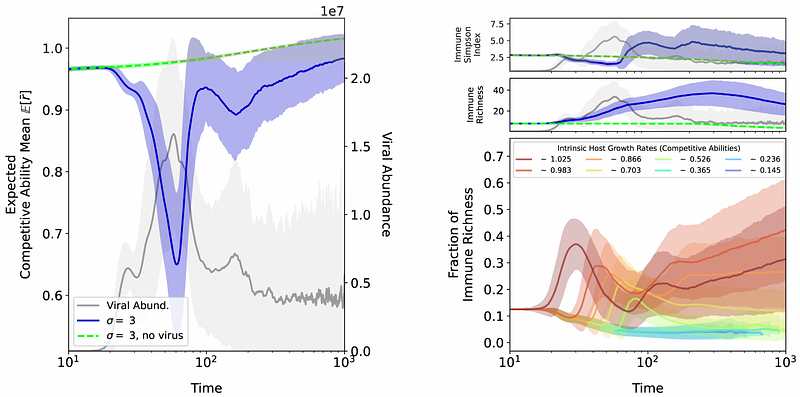Host Competitive Asymmetries Accelerate Viral Evolution in a Microbe-Virus Coevolutionary System

Host Competitive Asymmetries Accelerate Viral Evolution in a Microbe-Virus Coevolutionary System
Liaghat, A.; Guillemet, M.; Whitaker, R.; Gandon, S.; Pascual, M.
AbstractMicrobial host populations evolve traits conferring specific resistance to viral predators via various defense mechanisms, while viruses reciprocally evolve traits to evade these defenses. Such co-evolutionary dynamics often involve diversification promoted by negative frequency-dependent selection. However, microbial traits conferring competitive asymmetries can induce directional selection, opposing diversification. Despite extensive research on microbe-virus co-evolution, the combined effect of both host trait types and associated selection remains unclear. Using a CRISPR-mediated co-evolutionary system, we examine how the co-occurrence of both trait types impacts viral evolution and persistence, previously shown to be transient and non-stationary in computational models. A stochastic model incorporating host competitive asymmetries via variation of intrinsic growth rates reveals that competitively-advantaged host clades generate the majority of immune diversity. Greater asymmetries extend viral extinction times, accelerate viral adaptation locally in time, and augment long-term local adaptation. These findings align with previous experiments, and provide further insights into long-term co-evolutionary dynamics.